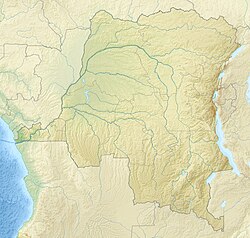Colonial era
The villages of Bomputu, Boende, Baliko and Iyonje all belonged to one Bolangala clan. Ekof'Olomba was in charge of Bomputu. A local account says how Ekof'Olomba took a shield and spears and went to make a pact of friendship with the Whites. Lemesu, leader of the Whites, told him to get his people out of the forest, where they were hiding. The White then imposed the harvest of rubber on all four villages, and told Ekof'Olomba to bring him supplies each day.
As of 1 January 1894 the Société anonyme belge pour le commerce du Haut-Congo (SAB) had 83 factories and posts, including some in the French territory to the west of the Congo and Ubangi rivers. A map shows the company had posts along the upper Ruki River (i.e. the Busira) at Bilakamba, Bombimba, Bussira Manene, Moniaca, Bocoté and Yolongo. It also had the post at Bomputu on the Lengué (Salonga) River, and posts at Balalondzy, Ivulu and Ivuku on the Momboyo River.
In the late 1920a and early 1930s the local people in Equateur district were passively resisting the colonial occupation. The authorities found the people of the villages of Bolemba, Bombongo, Bomputu, Liemba, Biala and Yundji were aggressively hostile, and implemented a military action in the area.
This page is based on this
Wikipedia article Text is available under the
CC BY-SA 4.0 license; additional terms may apply.
Images, videos and audio are available under their respective licenses.
